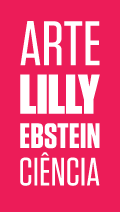Técnicas fotográficas
FOTOGRAFIA CIENTÍFICA E ARTÍSTICA E FOTOMICROGRAFIA
-
 Lilly Ebstein | Clique para ver +
Lilly Ebstein | Clique para ver + -
 Lette-Verein | Clique para ver +
Lette-Verein | Clique para ver + -
 Técnicas de ilustração científica | Clique para ver +
Técnicas de ilustração científica | Clique para ver +
O ensino de Técnica Fotográfica em 1890 na Escola Lette-Verein foi seguido depois pelo de Fotografia Científica, Técnica em Radiologia, Fotomicrografia e Metalografia.
A abertura do curso de Técnica Fotográfica em 1890 na Escola Lette-Verein, com dois anos de duração, foi um empreendimento ousado para a época e marcou o início de um novo campo de trabalho para as mulheres. O ponto de partida foi o aspecto artístico da fotografia, que era visto como mais adequado para as mulheres, mas logo se ampliou o campo para a formação em Fotografia Científica (Wissenschaftliche Photographie) e em Fotografia Profissional (Fachphotographie).
A Fotografia Científica podia conduzir a diversos caminhos de atuação profissional, dentre eles o de assistente em institutos de Medicina, Veterinária ou em laboratórios; estes cursos também podiam incluir uma formação em Botânica e Biologia. Em 1895 começou a ser oferecida uma disciplina completamente nova para as fotógrafas, a de Técnica em Radiologia. A assistente técnica de um laboratório de Raios X precisava saber tirar, preparar e revelar os Raios X, produzir uma foto macroscópica, fazer cópias fotográficas e preparar imagens para projeção em aulas. Para ser aprovada no exame estatal de fotógrafo era ainda necessário o estudo de Química, Física, Anatomia, Fisiologia e Radiologia.
A partir de 1905 o curso de Fotografia passou a incluir também a formação em Fotomicrografia e em Metalografia. A Fotomicrografia era ministrada em conjunto com outras disciplinas, como Anatomia, Eletricidade, Parasitologia, Histologia, Sorologia, Métodos de Corte e Coloração e Técnicas de Microscopia. Na formação oferecida na Lette-Verein acreditava-se que só era possível exercer o trabalho de fotomicrógrafa com amplo conhecimento científico do que se estava sendo retratado. A Fotomicrografia foi inserida no curso com o objetivo de ser utilizada em instituições de Medicina e de Ciências Naturais ou na indústria. Com a introdução dessa disciplina, houve uma mudança na organização do curso, que passou a ser dividido em três partes. 1- Fotografia Geral e Científica; 2- Reprodução e Retoques; 3- Processos Fotomecânicos. Havia também aulas de desenho.
Lilly Ebstein Lowenstein (1897-1966) viveu entre a ciência e a arte, desenhando e realizando fotografias nos campos da medicina e da zoologia. Em seu trabalho, Lilly conjugava o conhecimento técnico da fotografia e do desenho, o estudo das ciências e um notável talento estético. Nascida na Alemanha, ela estudou na Escola Lette-Verein em Berlim entre 1911 e 1914. Em 1925 imigrou com o marido e dois filhos para São Paulo. Em 1926, tornou-se desenhista e fotomicrógrafa da Seção de Desenho e Fotografia na Faculdade de Medicina (USP, a partir de 1934), da qual seria chefe por trinta anos a partir 1932. Entre 1930 e 1935 Lilly foi colaboradora do Instituto Biológico de Defesa Agrícola e Animal, principalmente da sua Seção de Ornitopatologia. Uma vida com arte dedicada à pesquisa e difusão da ciência.

